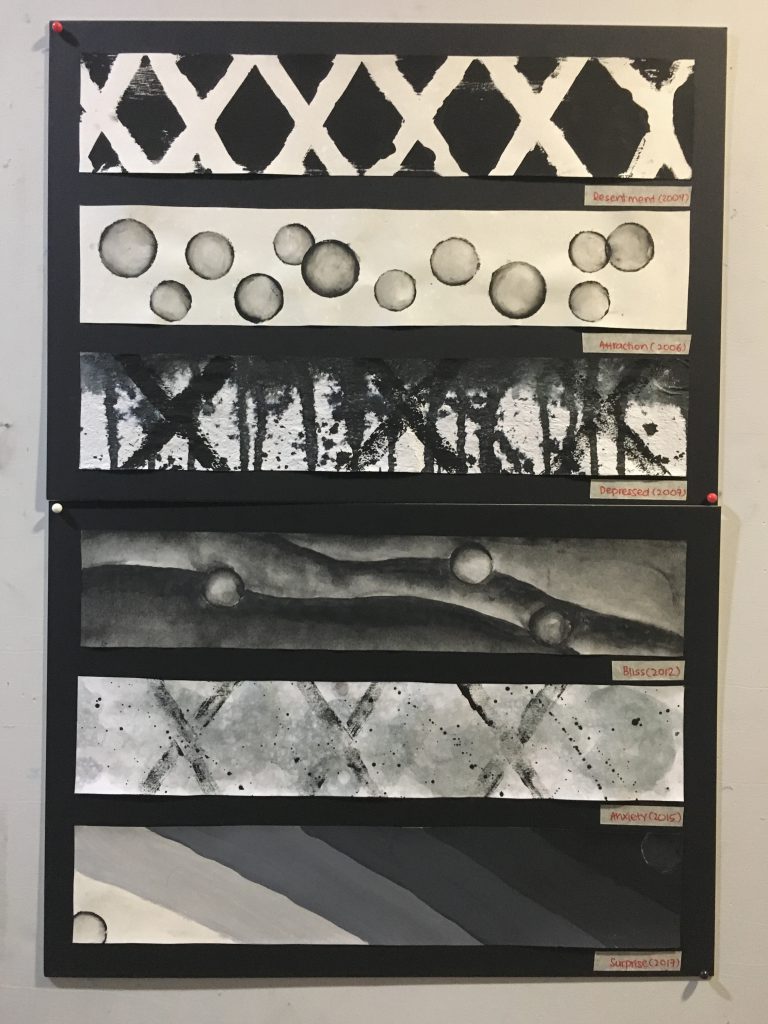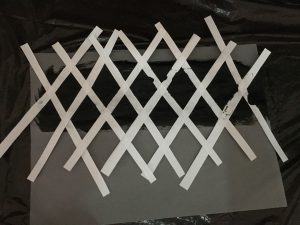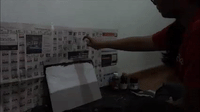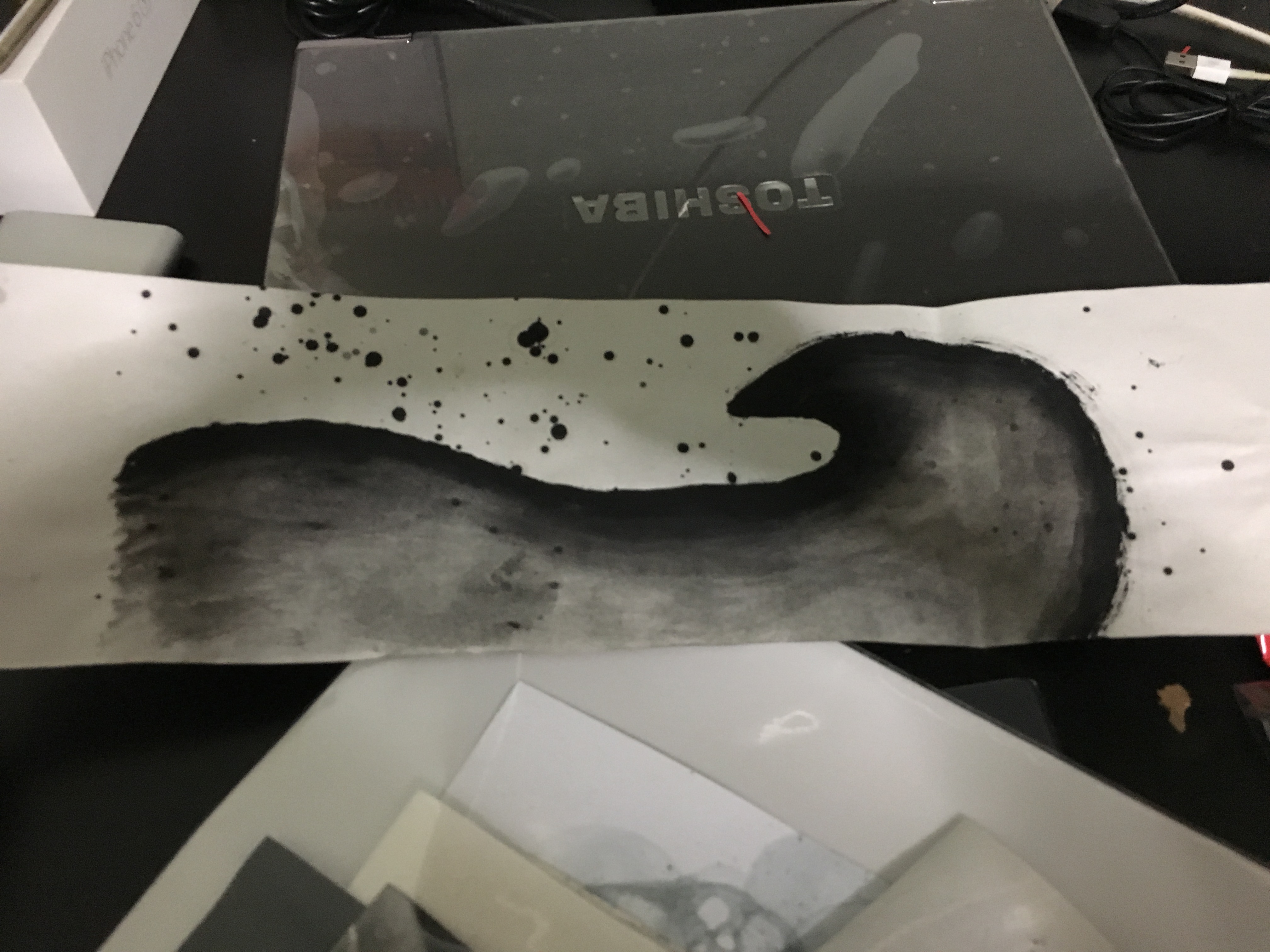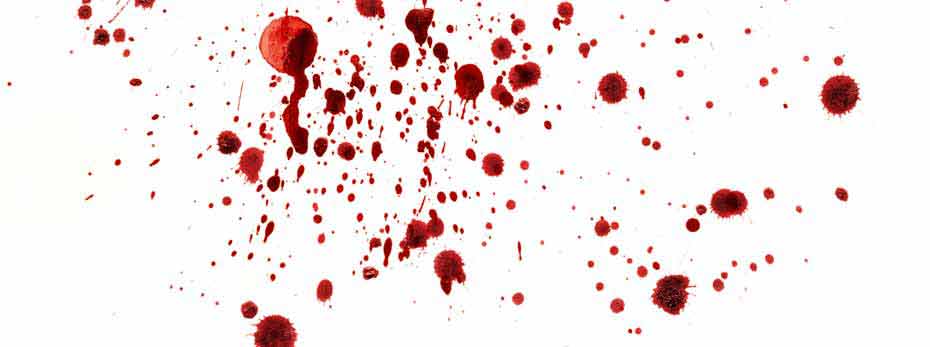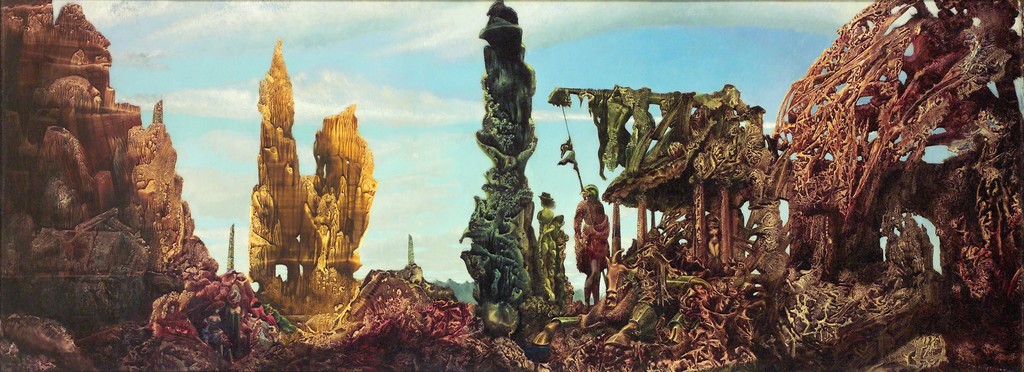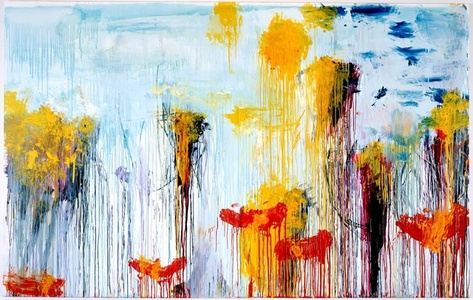I believe emotions are expressed differently from person to person. For example, different people express their happiness differently, some may express it outwardly, some inwardly, some may even cry when they are happy. Hence, for this project I hope to reflect my perspective on how I personally express this emotion.
To covey this, each emotion corresponds to a specific year in my life where a particular event occurred of that significant emotional nature. This events have shaped me to be the person I am today. Hence, I reflected my growth throughout the years from those older incidences in the newer ones by including certain mark making of old events in the new ones. Also, to display the aging growth, I have used older textured papers for older events and fresh white papers for newer events.
Resentment (Anger)
| Year: | 2004 |
| Story: | Being bullied by people who I thought were my friends |
| Methodology: | I cut out thin strips of paper and arranged them to form crosses
I placed the crosses above a layer of paint and place a sheet of paper over for the transfer |
| Meaning: | The crosses represents my resentment towards the people that bullied me.
The crosses are not perfect straight lines, and the paint bleeds through the white areas. This represent the resentment and frustration towards myself for not being able to forgive this people. |
Attraction (Love)
| Year: | 2006 |
| Story: | Experiencing my first crush |
| Methodology: | Using different sized bottle caps to create various circle shape all over the paper and adding a gradient using water colour for that bubble effect. |
| Meaning: | Bubbles represents the first time experience the bubbly feeling in the bottom of your stomach.
The negative space around the bubbles represents the pure innocence of puppy love and also illustrates how the bubbles are floating. |
Depressed (Sadness)
| Year: | 2007 |
| Story: | The day my sisters and I found out of my parent’s intention to divorce
(Includes some crosses from 2004 incident) |
| Methodology: | Firstly, I spritz the paper with some water and added water based paint on the top of the paper, allowing the paint to drip vertically onto the paper.
Then, using a stick and hitting it lightly to create a splattering effect. |
| Meaning: | I wanted to illustrate the feeling of being ripped apart from the inside by representing this with blood.
Some methods I chose was blood splattering and dripping. |
Bliss (Joy)
| Year: | 2012 |
| Story: | A night walk on the beach, away from the stress of O levels.
(includes some bubbles from 2006 incident) |
| Methodology: | Using black paint of different intensity to create the outline of the waves and water colour to give it some gradient. |
| Meaning: | The gentle waves represent the peace and calmness from the stresses of O levels. |
Anxiety (Fear)
| Year: | 2015 |
| Story: | Internship – difficult boss, heavy workload, stressful situations
(includes some crosses from 2004 incident, some blood splattering from 2007 incident) |
| Methodology: | I poured some water based paint, water and soap into several cups. Using a straw, I created bubbles and placed the paper over the bubbles. This process is repeated to build up the colour intensity. The bubbles on the paper forms a cloudy effect. |
| Meaning: | The cloudy effect represents my inability to think straight and the messy thoughts that were going on inside my head. |
Surprise
| Year: | 2017 |
| Story: | Receiving the results for University Application
(includes some bubbles from 2006 incident, some waves from 2012 incident) |
| Methodology: | Firstly using white paint at the beginning and gradually adding black paint to darken the colour, ending with black on the other end of the paper. Thus, creating a gradient. |
| Meaning: | The gradient effect is to illustrate the feeling of nothing to great excitement (0 to 100).
I decided to go with diagonal lines to relate it back to the Bliss emotions which showed gentle waves. The diagonal lines in this piece was more angular and rigid compared to the Bliss waves to show that surprise was a completely different emotion from that. |
Conclusion:
One of my biggest challenges for this project was creating the bliss piece. It was difficult to recreate the emotions from that event. I wanted to recreate the waves from the beach that day, however, was worried that it would be too literal. Instead, I thought the gentle waves would represent the calmness.
Some things I believe I could have improved on for this project was exploring more visual meanings rather than representational meanings. Adding meanings to each bubbles, crosses, waves, blood in the newer events. I could have also used a more abstract way of expressing this emotions rather than being literal and representational.
A positive thing that I can replicate in projects to come is adding a personal touch to my artwork hence creating an emotional connection that other people could relate to.
Links to previous post:
Research: https://oss.adm.ntu.edu.sg/nora0020/research-on-mark-making/
Experimentation: https://oss.adm.ntu.edu.sg/nora0020/experimentation-mark-making/


